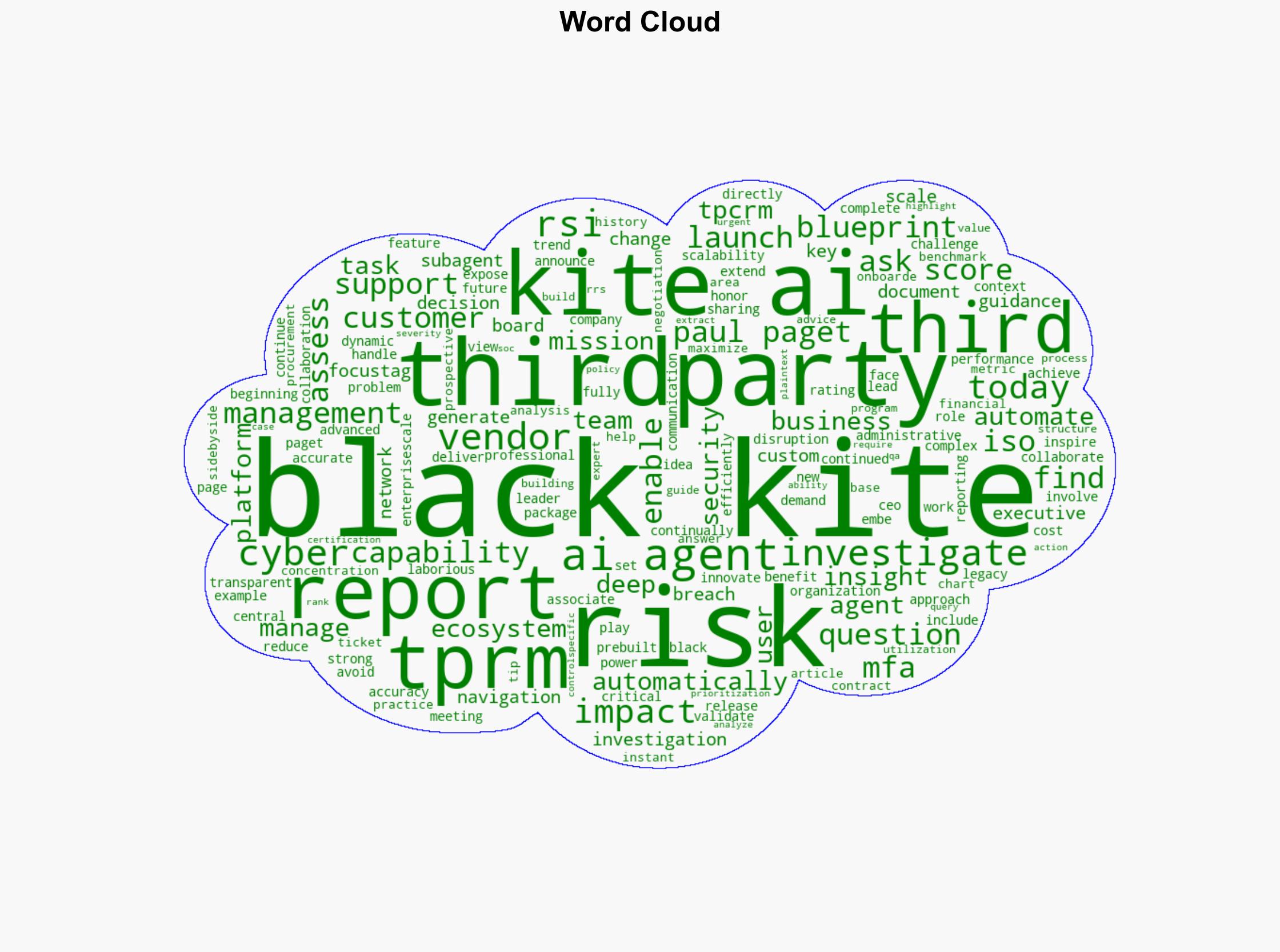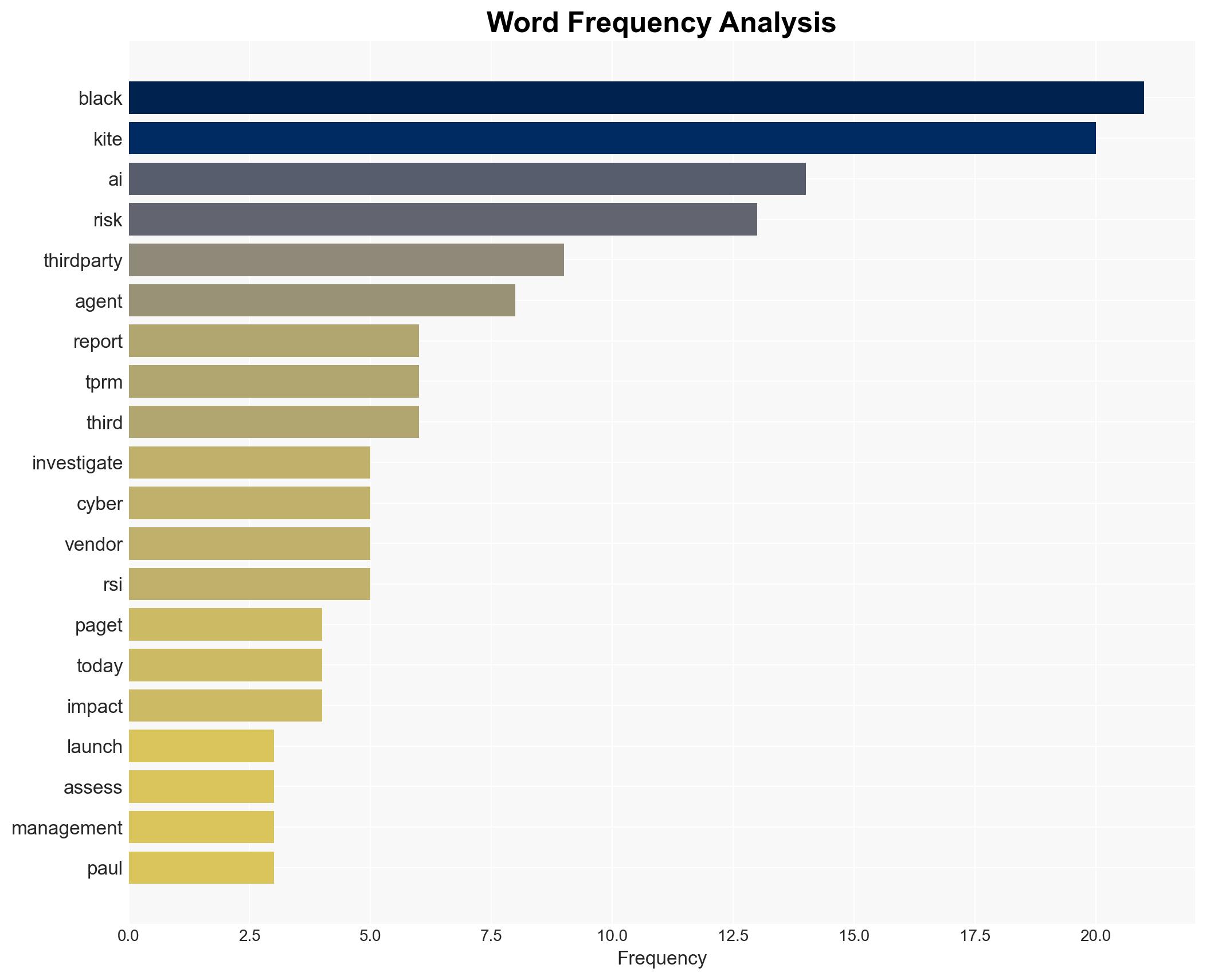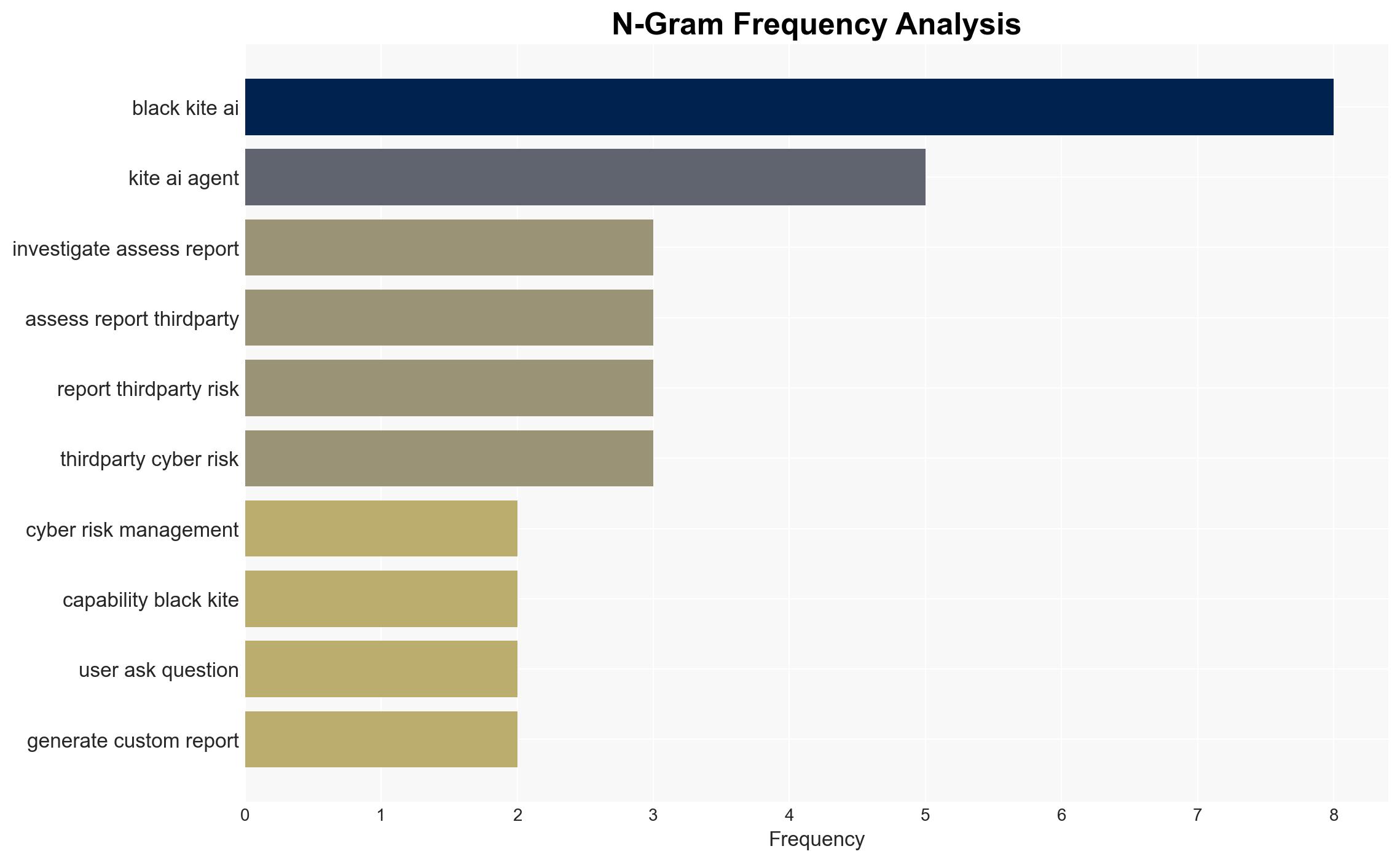Black Kite launches AI Agent to automate third-party risk work – Help Net Security
Published on: 2025-11-19
AI-powered OSINT brief from verified open sources. Automated NLP signal extraction with human verification. See our Methodology and Why WorldWideWatchers.
Intelligence Report: Black Kite AI Agent Launch
1. BLUF (Bottom Line Up Front)
The launch of Black Kite’s AI Agent represents a significant advancement in third-party risk management, potentially setting a new standard in the industry. The most supported hypothesis is that Black Kite aims to solidify its leadership in the third-party cyber risk management sector by leveraging AI technology to enhance efficiency and accuracy. Confidence Level: Moderate. Recommended action includes monitoring the adoption rate and performance feedback of the AI Agent to assess its impact on the market and potential vulnerabilities.
2. Competing Hypotheses
Hypothesis 1: Black Kite’s AI Agent is a strategic move to dominate the third-party risk management market by offering superior technology that automates complex tasks, thus appealing to large enterprises.
Hypothesis 2: The AI Agent is primarily a marketing strategy to create a perception of innovation and leadership in cybersecurity, with actual technological advancements being incremental rather than transformative.
Hypothesis 1 is more likely due to the detailed description of the AI Agent’s capabilities and the emphasis on customer collaboration and feedback, suggesting a genuine technological advancement rather than a mere marketing ploy.
3. Key Assumptions and Red Flags
Assumptions: The AI Agent’s performance and scalability claims are accurate and verifiable. Customers will adopt the technology based on its purported benefits.
Red Flags: Lack of independent validation of the AI Agent’s capabilities. Over-reliance on customer testimonials without empirical data could indicate potential exaggeration of capabilities.
4. Implications and Strategic Risks
The introduction of AI in third-party risk management could lead to increased efficiency and reduced costs for businesses, but it also raises potential risks such as over-reliance on AI, which could lead to complacency in cybersecurity practices. Additionally, if the AI Agent is not as effective as claimed, it could result in undetected vulnerabilities and increased exposure to cyber threats.
5. Recommendations and Outlook
- Monitor the AI Agent’s adoption and performance metrics closely to validate its effectiveness.
- Encourage independent third-party evaluations of the AI Agent to ensure transparency and build trust.
- Best-case scenario: The AI Agent revolutionizes third-party risk management, leading to widespread adoption and improved cybersecurity standards.
- Worst-case scenario: The AI Agent fails to deliver on its promises, leading to reputational damage for Black Kite and potential security breaches for its clients.
- Most-likely scenario: The AI Agent is adopted by a segment of the market, with gradual improvements and refinements over time.
6. Key Individuals and Entities
Paul Paget, CEO of Black Kite
7. Thematic Tags
Structured Analytic Techniques Applied
- Adversarial Threat Simulation: Model and simulate actions of cyber adversaries to anticipate vulnerabilities and improve resilience.
- Indicators Development: Detect and monitor behavioral or technical anomalies across systems for early threat detection.
- Bayesian Scenario Modeling: Quantify uncertainty and predict cyberattack pathways using probabilistic inference.
- Network Influence Mapping: Map influence relationships to assess actor impact.
Explore more:
Cybersecurity Briefs ·
Daily Summary ·
Support us





